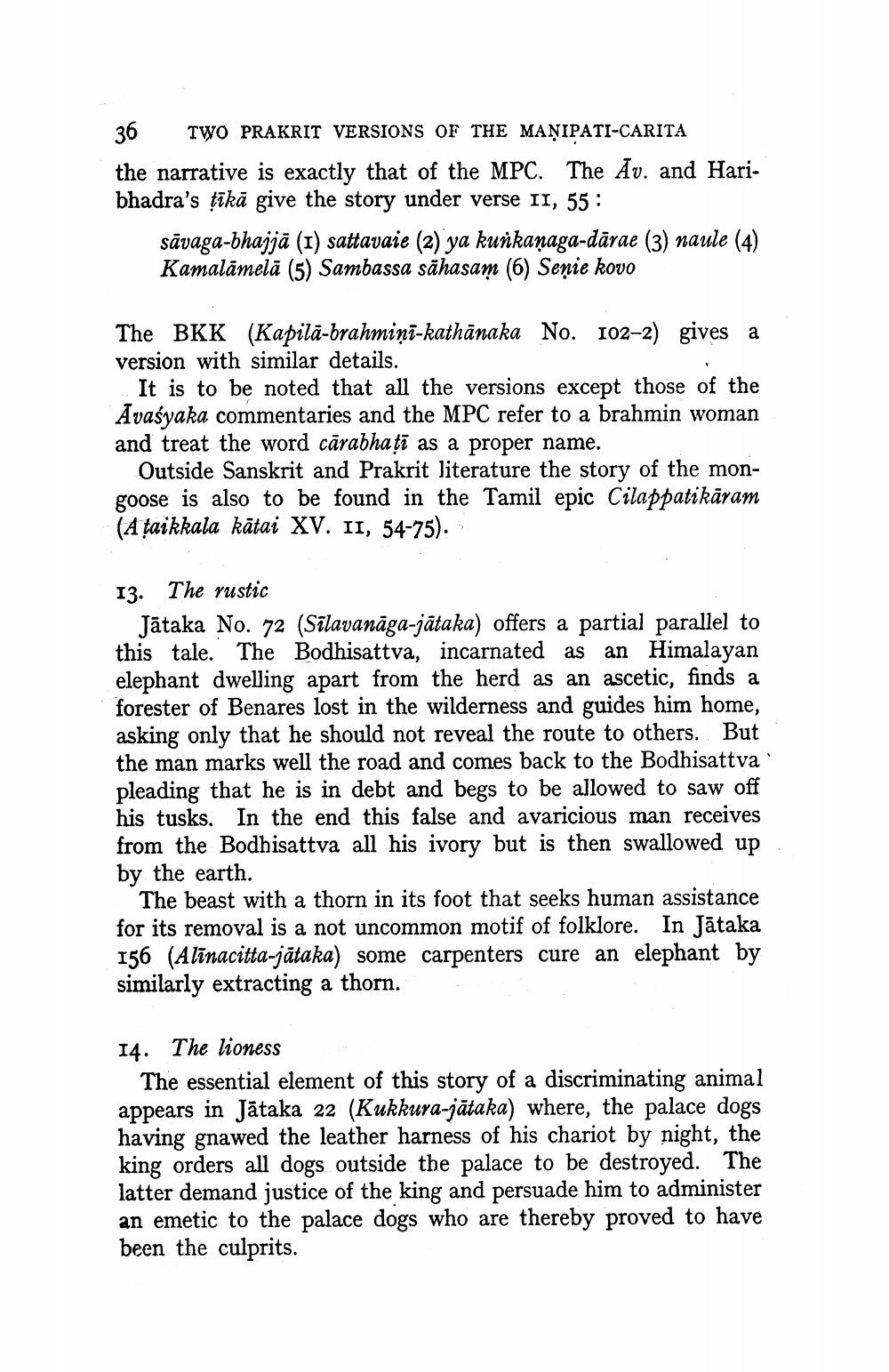________________
36
TWO PRAKRIT VERSIONS OF THE MANIPATI-CARITA
the narrative is exactly that of the MPC. The Av. and Haribhadra's tīkā give the story under verse II, 55:
sāvaga-bhajjā (1) sattavaie (2) ya kunkaṇaga-dārae (3) naule (4) Kamalāmela (5) Sambassa sähasam (6) Senie kovo
The BKK (Kapilā-brahmiņī-kathānaka No. 102-2) gives a version with similar details.
It is to be noted that all the versions except those of the Avaśyaka commentaries and the MPC refer to a brahmin woman and treat the word carabhați as a proper name.
Outside Sanskrit and Prakrit literature the story of the mongoose is also to be found in the Tamil epic Cilappatikāram (A taikkala katai XV. II, 54-75).
13. The rustic
Jātaka No. 72 (Sīlavanāga-jātaka) offers a partial parallel to this tale. The Bodhisattva, incarnated as an Himalayan elephant dwelling apart from the herd as an ascetic, finds a forester of Benares lost in the wilderness and guides him home, asking only that he should not reveal the route to others. But the man marks well the road and comes back to the Bodhisattva pleading that he is in debt and begs to be allowed to saw off his tusks. In the end this false and avaricious man receives from the Bodhisattva all his ivory but is then swallowed up by the earth.
The beast with a thorn in its foot that seeks human assistance for its removal is a not uncommon motif of folklore. In Jātaka 156 (Alīnacitta-jātaka) some carpenters cure an elephant by similarly extracting a thorn.
14. The lioness
The essential element of this story of a discriminating animal appears in Jātaka 22 (Kukkura-jātaka) where, the palace dogs having gnawed the leather harness of his chariot by night, the king orders all dogs outside the palace to be destroyed. The latter demand justice of the king and persuade him to administer an emetic to the palace dogs who are thereby proved to have been the culprits.




